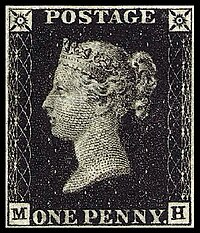Owners of the 1856 British Guiana One-Cent Magenta, one of the most valuable stamps in the world, have included a 12-year-old Scottish schoolboy, an Austrian nobleman and an American chemical heir found guilty of murder.
Who's next?
The stamp comes up for sale on June 17 at Sotheby's in New York, the auction house is set to announce Friday. Sotheby's has priced the object to sell for more than $10 million. Weighing 0.001 ounce, the faded scrap of paper would cost a bidder at least $1 million per ten-thousandth of an ounce to own.
The only one known to exist, the stamp has been an elusive trophy. It last sold in 1980 for $935,000 to John E. du Pont, whose estate is now trying to unload the asset. Mr. du Pont, an heir to the du Pont chemical fortune, died in 2010 in prison after being found guilty but mentally ill on a charge of third-degree murder in the shooting death of an Olympic wrestler he had befriended.
If successful, the sale would make the British Guiana the world's most expensive stamp at auction. Irwin an 86-year-old stamp dealer who bought the British Guiana in 1970 with a group of investors for $280,000, called the stamp "ugly," "faded"—and altogether life-changing. Asked how he felt the moment he acquired it, he replied, "Euphoric." Then he spelled the word forward and backward to underscore his point.
Part of the stamp's value lies in its lore. When Mr. Weinberg toured the stamp at exhibitions, he locked it in a briefcase handcuffed to his wrist. On a trip to Toronto, he said, the handcuff key broke in the lock, and a saw-wielding firefighter had to hack it off him. Mr. Weinberg said when he delivered the object to Mr. du Pont in 1980, the new owner marked the moment by taking them both on a helicopter ride in New York and ordering the pilot to spin around the Statue of Liberty's torch for fun.
Because of its rarity, the British Guiana has set a record for a stamp at auction every time it has sold. If another one is uncovered, collectors could always take their cue from upstate New York textile magnate Arthur Hind, who purchased the stamp in the 1920s. Folklore has it that Hind bought a second British Guiana and promptly burned it with his cigar match in front of the seller, thus ensuring the surviving stamp's value.
[b]The stamp for sale at Sotheby's was discovered in 1873 by a Scottish 12-year-old living in British Guiana, now the South American nation of Guyana. After finding the item in some family papers, he sold it to a local dealer for several shillings. The stamp's subsequent adventures include getting seized by France as part of World War I reparations and becoming ensnarled in a lawsuit in the 1930s. According to Sotheby's, it is the only British Colonial stamp missing from the royal collection of Queen whose grandfather King George V, was a collector.
http://online.wsj.com/news/art...04579377403520318772

